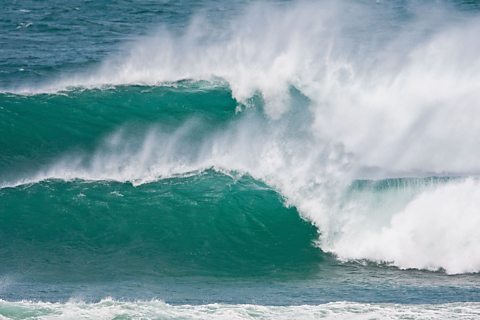Key facts
Hydroelectric power (HEP) is the second biggest renewable Something that does not run out when used. energy generator in Scotland behind onshore wind farms.
HEP relies on the flow of water due to gravity to generate electricity.
Larger HEP schemes involve building a dam across a river valley. This means water can be stored in a reservoir and released when electricity is needed. As the water is stored and its flow can be controlled, HEP is more reliable than renewable energy sources that depend directly on the weather.
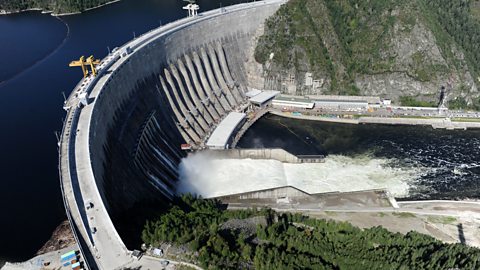
Hydroelectric power and its impact
Find out how water can be used to generate electricity.
Scotland gets a lot of rain. An awful lot of rain. If only there was a way to turn all of this into clean energy. Hydroelectric power does just that – and even better, it’s a renewable source of energy.
For hydro power to work you need a couple of things. Lots of water, somewhere to store it all, and some way of using it to generate electricity. The good news is that Scotland has all of these. IT has lots of lochs and rivers thanks to all that rain, it has steep valleys that are perfect for building dams to store it all, and it has clever engineers who know how to use them properly.
The idea is simple. Water is stored high up in valleys behind a dam. At this point, the energy stored there is called ‘potential energy’. When the water is released, gravity makes it fall down through pipes in the dam. All the potential energy changes to a huge amount of ‘kinetic energy’.
Down at the bottom are enormous turbines. The kinetic energy of the falling water turns the blades of the turbines. This turns electromagnets in a generator which changes this kinetic energy into ‘electrical energy’.
Once it’s done its job of turning turbines and generating electricity, the water flows out of the power station and downstream. But in some power stations the water is stored in a lower reservoir and can be pumped back up hill to the dam so it can be used again and again.
∞’≥Û±∞˘±‚Äôs no pollution from waste products, or greenhouse gases, no fuel costs, and it‚Äôs cheap to run once it‚Äôs set up. Plus with dams we can regulate the creation of electricity, only producing when we need to. So, what‚Äôs the catch?
Well, they’re very expensive to build. A lot of concrete is needed to build dams and making that concrete creates a lot of CO2. There can also be environmental problems, too. When a valley is dammed, large areas of land are flooded.
Ian Molnar, Hydrogeology Lecturer, University of Edinburgh: When you look at a map of where all the big hydroelectric power plants are in the world, hydroelectric power is mostly used in the wettest countries. The four biggest producers in the world are some of the wettest countries in the world. So, China, Brazil, Canada, and the US make up roughly half of all hydro power generated in the world.
We know we need to stop relying on non-renewable fuels, and hydro is a good example of a renewable energy source, so, what do you think? Is it worth flooding a valley to produce clean and cheap energy?
How hydroelectricity is generated
Large scale hydroelectric schemes work by storing water behind a dam and releasing a controlled amount of water to generate electricity.
- All that lovely Scottish water is stored high up in valleys behind a dam. At this point, the energy stored there is called potential energy.
- When the water is released, gravityA force that pulls things towards the centre of a mass. Gravity is much stronger for bigger masses like planets and stars. makes it fall down through pipes in the dam. All that potential energy changes to a huge amount of kinetic energy.
- Down at the bottom are enormous turbineA turbine is a machine that turns the movement of liquid or gas into energy that can be used. In a simple turbine water or air push against turbine blades and spin them round. The spinning blades turn a long pole called a shaft. The shaft can then turn other pieces of machinery, such as a generator that is used to produce electricity.. The kinetic energy of the falling water turns the blades of the turbines. This turns electromagnets in a generator, which changes kinetic energy into electrical energy.
- Once it’s done its job of turning the turbines and generating electricity, the water flows out of the power station and downstream.
- In pumped storage power stations, the water is stored in a lower reservoir and can be pumped back up hill to the dam so it can be used again and again. The water is pumped back up at night when there is excess electricity in the National Grid.
Run of river hydroelectricity
Run of river hydroelectric systems are smaller projects that work without a dam. This means they cause less disruption to the flow of a river and the local environment.
- Some water from a river or stream is diverted through an intake weir.
- Gravity causes the water to run downhill through underground pipes.
- The water is piped through a turbine in a powerhouse.
- The spinning turbine turns a generator that generates electricity.
- The water flows from the turbine and through an outlet back into the river.
Location factors
As you’d expect, HEP requires an abundance of precipitation (rain, hail, sleet and snow). It works best in wetter areas of the world, such as the north west U.S.A.
Steeper land is an ideal location for the power station as higher land receives more precipitation. For example, the Highlands of Scotland.
V-shaped valleys or U-shaped valleys can both be used as locations for Hydro Electric Power stations. U-shaped valleys provide a flat base for reservoirs, which means they can be store large volumes of water.
Higher, steeper valleys can generate more electricity because of greater .
The siting of an HEP scheme needs to take into consideration the effect on local populations and wildlife, so that large numbers of people do not need to be relocated, and sensitive habitats and species are not damaged or destroyed.
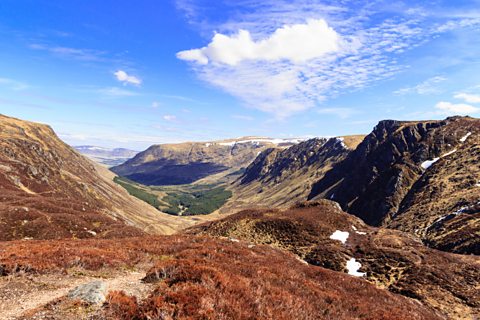
Sustainability of hydroelectric power
 Image source, ALAMY: G3 KRG2
Image source, ALAMY: G3 KRG2To develop a sustainable future you need to think about meeting today's needs and protecting the¬ÝenvironmentÃ˝≤π≤‘ªÂÃ˝resources¬Ýfor the future.
Hydroelectric power is a renewable energy because there will always be rain and other precipitation. However changing climate and rainfall may sometimes affect how much water is available to generate it.
It produces no direct carbon emissions or pollution and so can help minimise global heating.
Setting up hydro dams uses large amounts of concrete and this contributes to carbon emissions. Dead vegetation can become trapped behind . As it rots, this releases carbon monoxide and methane, both of which are greenhouse gases.
Smaller run-of river hydro schemes that do not rely on large dams reduces both of these issues.
Advantages and disadvantages of hydroelectric power
Advantages
- ∞’≥Û±∞˘±‚Äôs no pollution from waste products or greenhouse gasA gas that absorbs heat so that it is trapped in the Earth's atmosphere. Greenhouse gases help keep the Earth warm but increasing amounts of greenhouse gases causes global heating. The main greenhouse gases are water vapour, carbon dioxide and methane , no fuel costs and it‚Äôs cheap to run once it‚Äôs set up.
- Plus, with dams, we can regulate the creation of electricity, only producing when we need to.
- Water power in its various forms is a renewable energy resource.
- Hydroelectric power stations that store water are very reliable and the amount of electricity produced can be easily altered to meet demand.
- Valves can be opened very quickly to produce energy at peak times.
Disadvantages
- They are very expensive to build. A lot of concrete is needed to build a dam, and making that concrete creates a lot of carbon dioxide.
- There can also be environmental problems, too. When a valley is dammed, large areas of land are flooded which can have a negative impact on wildlife, habitats and local communities.
- You need the right type of geography – hilly with lots of water. So not a good idea in a flat desert.
- Dams can block fishes' migration routes. They alter the flow of water downstream which may affect people and the environment down the rest of the river valley.
- Rotting vegetation that would have just normally flowed away can get trapped by dams. This ends up rotting to produce methane and carbon monoxide – greenhouse gasA gas that absorbs heat so that it is trapped in the Earth's atmosphere. Greenhouse gases help keep the Earth warm but increasing amounts of greenhouse gases causes global heating. The main greenhouse gases are water vapour, carbon dioxide and methane that end up in the atmosphere.
Test your knowledge
More on Energy sources and sustainability
Find out more by working through a topic
- count7 of 12
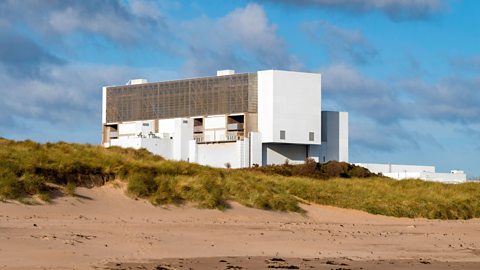
- count8 of 12
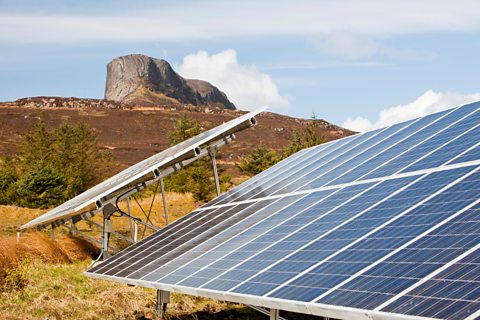
- count9 of 12
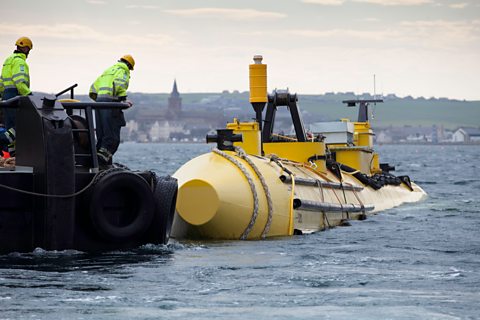
- count10 of 12
